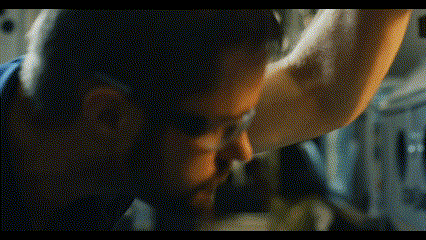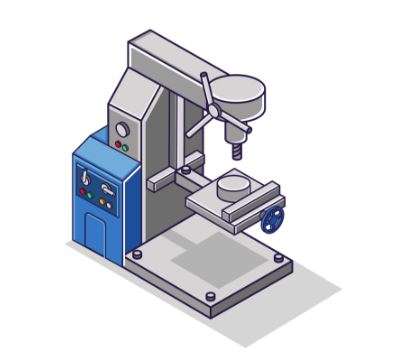
CNC drilling is a technique that stands out due to its unparalleled precision and efficiency. It’s essential in countless industries, from automotive and aerospace to electronics and medical sectors. However, as with any advanced technology, the financial aspect of CNC drilling can pose a challenge. Comprehending and calculating the cost of CNC drilling is not as straightforward as it might seem. The calculation methods for CNC drilling cost and CNC machining price are similar. The main difference is the difference in machine cost and processing time.
This article discusses CNC drilling costs, providing a comprehensive understanding and a step-by-step guide to calculating them.
Factors Influencing CNC Drilling Costs
Several factors influence the cost of CNC drilling. Understanding these elements is crucial to making informed decisions about CNC drilling projects. Here, we dissect the various costs associated with CNC drilling:
1. Machine Costs

Machine costs are a significant factor in the overall CNC drilling expenditure. These costs can be divided into two categories:
- Operational Cost: These are the recurring costs of running the CNC machine. They include costs for energy consumption, maintenance, and machine depreciation.
- Initial Purchase Cost: The upfront cost of acquiring the CNC drilling machine. It’s a one-time expense, but it can be quite significant, especially for high-end machines with advanced capabilities.
Here’s an example table showing hypothetical machine costs:
| Cost Type | Estimated Cost |
|---|---|
| Purchase Cost | $100,000 |
| Energy Cost (per year) | $5,000 |
| Maintenance Cost (per year) | $3,000 |
| Depreciation Cost (per year) | $10,000 |
2. Tooling Costs
Tooling costs refer to the expenses associated with the various tools used in CNC drilling. These can include drill bits, collets and tool holders, coolants, and lubricants. Furthermore, the costs can vary greatly depending on the type of material you’re drilling and the complexity of the operation.
3. Material Costs
Material costs are the expenses related to the workpiece material you are drilling. The cost of materials can vary depending on several factors, including:
- Type of material (aluminum, steel, titanium, etc.)
- Size and shape of the material
- Availability and the market price of the material
4. Labor Costs
Labor costs are another critical element in the overall CNC drilling cost. This includes the wages of the CNC operators and technicians. The complexity of the drilling operation, the level of expertise required, and the local labor market conditions can all influence labor costs.
5. Overhead Costs
Overhead costs are the indirect costs that are not directly tied to the CNC drilling operation but are necessary for running the business. These can include:
- Rent or mortgage for the facility
- Utilities like electricity, water, and internet
- Administrative expenses
- Insurance premiums
All these factors need to be taken into account to get a complete picture of your CNC drilling costs. In the next sections, we’ll discuss how to calculate these costs and provide an example of a cost calculation for a specific application.
Calculating CNC Drilling Costs
Calculating the cost of a CNC drilling operation involves aggregating the costs discussed in the previous section. Here’s a step-by-step guide on how to calculate your CNC drilling costs:
Step 1: Calculate Machine Costs
Firstly, you need to determine your machine costs. This involves adding the initial purchase cost, the energy cost, the maintenance cost, and the depreciation cost.
Example:
Let’s say you purchased a CNC machine for $100,000. The annual energy cost is $5,000, the maintenance cost is $3,000, and the machine depreciates by $10,000 yearly. If you are using the machine for 2000 hours per year, your hourly machine cost would be:
($100,000 + $5,000 + $3,000 + $10,000) / 2000 hours = $59 per hour
Step 2: Calculate Tooling Costs
Next, calculate your tooling costs. This includes the cost of drill bits, tool holders, and coolants. To find the hourly tooling cost, divide the total tooling cost by the expected lifespan of the tools (in hours).
Example:
If your tooling costs amount to $2000 and the expected lifespan is 1000 hours, your hourly tooling cost would be:
$2000 / 1000 hours = $2 per hour.
Step 3: Calculate Material Costs
To calculate the material costs, determine the cost of the workpiece material per unit. Then multiply this by the units you expect to produce per hour.
Example:
If the material cost per unit is $10 and you produce 10 units per hour, your hourly material cost would be :
$10 per unit x 10 units/hour = $100 per hour
Step 4: Calculate Labor Costs
Next, calculate your labor costs. This is your CNC operator’s hourly wage.
Example:
If your CNC operator earns $20 per hour, your hourly labor cost would be $20.
Step 5: Calculate Overhead Costs
Overhead costs can be calculated by adding all your indirect costs and dividing by the number of operating hours per year.
Example:
If your annual overhead costs are $50,000 and you operate for 2000 hours per year, your hourly overhead cost would be:
$50,000 / 2000 hours = $25 per hour
Step 6: Add All Costs
Finally, add all your hourly costs to find the total hourly cost of your CNC drilling operation. This is your cost per hour to operate the CNC drilling machine.
Example:
$$ Total cost = Hourly Machine Cost + Hourly Tooling Cost + Hourly Material Cost + Hourly Labor Cost + Hourly Overhead Cost $$
= $59 + $2 + $100 + $20 + $25 = $206 per hours.
Example of CNC Drilling Cost Calculation
Let’s consider a specific example to illustrate how these cost calculations come together. We will be calculating the cost for a CNC drilling operation where we are producing a metal bracket with four drilled holes.
1. Technical Specifications
- Material: Aluminum
- Dimensions: 100mm x 50mm x 10mm
- Hole Diameter: 10mm
- Hole Depth: 10mm
- Number of Holes: 4
- Operation: CNC Drilling
2. Calculation of Involves Costs
Here is a table of the six steps involved in calculating CNC drilling costs, including the cost type, calculating formula, calculation, and estimated cost per hour.
| Step | Cost Type | Calculating Formula | Calculation | Per Hour Estimated Cost |
|---|---|---|---|---|
| 1 | Machine Costs | ([Purchase Cost / Lifespan in Hours] + [Maintenance Cost / Operating Hours per Year] + [Electricity Cost / Operating Hours per Year]) | ($100,000 / 20,000 hours) + ($3,000 / 2,000 hours) + ($2,000 / 2,000 hours) = $7.5/hour | $7.5/hour |
| 2 | Tooling Costs | (Tool Cost / Tool Lifespan in Hours) | $30 / 100 hours = $0.3/hour | $0.3/hour |
| 3 | Material Costs | (Material Cost per Bracket x Brackets Produced per Hour) | $2/bracket x 30 brackets/hour = $60/hour | $60/hour |
| 4 | Labor Costs | $20/hour | $20/hour | |
| 5 | Overhead Costs | (Annual Overhead Costs / Operating Hours per Year) | $10,000 / 2,000 hours = $5/hour | $5/hour |
| 6 | Total Cost Calculation | Machine Cost + Tooling Cost + Material Cost + Labor Cost + Overhead Cost | $7.5/hour + $0.3/hour + $60/hour + $20/hour + $5/hour = $92.8/hour | $92.8/hour |
3. Total cost calculation
So, the cost of drilling four holes into each metal bracket, given our assumptions, is approximately $92.8 per hour. This cost will produce 30 brackets per hour, so the cost per bracket is:
(Total Hourly Cost / Brackets Produced per Hour)
= ($92.8/hour / 30 brackets/hour)
= $3.09/bracket
This calculation provides a fundamental understanding of how to calculate CNC drilling costs. However, it’s worth noting that the numbers can vary significantly based on the specifics of your operation, local market conditions, and many other factors. Always do a detailed cost analysis specific to your operation to get accurate cost estimates.
Related: Six Effective Strategies to Reduce CNC Machining Costs
Conclusion
Understanding and calculating CNC drilling costs can be complex, but it’s essential for budgeting and cost control. Manufacturers can make the most of their CNC drilling operations by considering all the factors that contribute to the cost and seeking ways to optimize them. Manufacturers can leverage CNC drilling as a cost-effective and high-quality solution for their production needs by understanding the cost structure and seeking ways to optimize it.
Partnering with an expert like Prolean can further enhance these benefits, providing access to top-of-the-line CNC drilling services and CNC machining service
FAQs
1 What factors influence CNC drilling costs?
CNC drilling costs are influenced by several factors, including machine costs (purchase, operation, maintenance), tooling costs (drill bits, tool holders), material costs (workpiece material, coolant), labor costs (operator wages, setup time), and overhead costs (utilities, rent, insurance).
2 How can I reduce my CNC drilling costs?
Optimizing machining parameters, maintaining tool sharpness, using proper coolant, investing in quality machines and tools with longer lifespans, and training your operators to work efficiently and effectively can reduce CNC drilling costs.
3 What is included in a CNC drilling cost calculation?
A CNC drilling cost calculation includes direct costs like machine, tooling, material, and labor costs and indirect costs or overhead such as utilities, rent, and insurance. It’s essential to include all these factors to get an accurate picture of the total cost of CNC drilling operations.




0 Comments